Liquid packaging machines are essential in various industries for efficiently filling and sealing containers with liquids. Development in packaging technology has led to the current sophisticated machines that guarantee precise, hygienic, and rapid packaging processes. These machines are therefore very important in the modern manufacturing industry as they assist a business in ensuring that consumer demand is met while adhering to the quality and safety standards.
The types of liquid packaging machines are designed in such a way that they are aimed and developed to fit certain needs. Understanding them helps in the selection of the perfect machine based on your production requirements.
Aseptic filling machines are devices used for filling aseptically sterile products into pre-sterilized containers. This is a necessary device for products that are intended to be sterile during their lifetime on the shelf. They are applied in dairy products, beverages, and many pharmaceuticals to maintain a high-quality level of the product through the elimination of contamination during packaging.
These bottle filling machines are versatile in that they can fill various sizes and shapes of bottles. They basically find applicability in the beverage industry for the filling process of water, juices, soft drinks, alcoholic beverages, and other beverages. They can also be customized to meet specific production needs, ensuring high efficiency and minimal downtime.
Sachet filling machines are designed for sealing liquid items in small quantities in flexible packets. The machines are well suited for products such as sauces, shampoos, and other condiments. The sachet filling machines are easily identified with high accuracy and can operate within high-speed production lines, thus gaining popularity in the filling of single-use products.
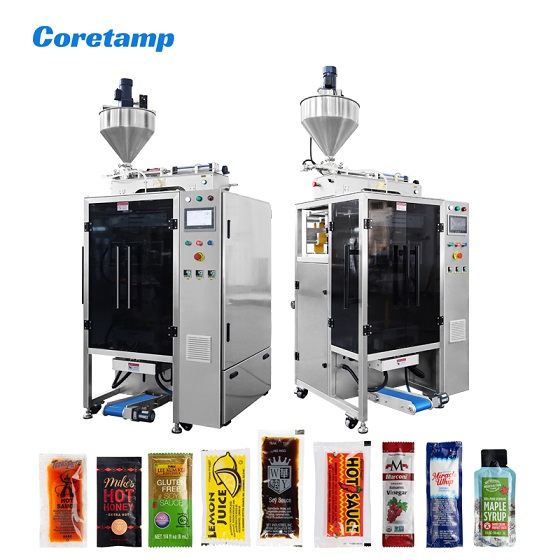
Understanding the working principle of liquid packaging machines is important to make proper use of the equipment in their best manufacturing. Normally built with several key components, these machines basically work on the base of a few driving principles to ensure accuracy in the packaging process.
Liquid packaging machinery fills containers with liquid volume according to the predetermined specifications, and then seals them. Broadly, the process includes container feeding, filling, capping or sealing, and labeling. Automation plays a significant role in ensuring these steps are carried out seamlessly.
Components present in a liquid packaging machine consist of a filling head, a conveyor system, a sealing mechanism on the container, and a control panel. The machine contains a filling head, which is in use to ensure the correct amount of liquid dispensation, and a conveyor system to convey the containers from one packaging stage to the next. The sealing mechanism ensures the container’s seal, and the control panel allows the operator to view information regarding the optimization of the machine and its settings.
Modern liquid packaging machines are highly automated, hence reducing the level of manual involvement. This is, therefore, a speedier and more accurate way of packaging, which eventually increases productivity and consistency. Advanced machines are embedded with sensors and control systems for monitoring the process and making any adjustments in real-time to ensure optimal performance.
There are a number of advantages that come with investing in liquid packaging machines that can very well improve the efficiency of production and the quality of the product.
Liquid packaging machines are designed to handle large volumes of production in a short time. They streamline packing processes, and by doing so, reduce the time and labor of filling and sealing any container that is used. Increased efficiency allows the handling of high levels of demand and delivering it in the form of reduced lead times.
One of the key pros of liquid packaging machines is their consistent volume filling. This automatic packaging technique keeps every container full with the same product volume, which does not only minimize wastage but also prevents dissatisfaction among purchasers. Constant packaging also helps to keep the brand image maintained and stay within industry standards.
Liquid packaging machines reduce labor costs by automating processes involved in packaging. This saves business operations a significant amount of money since labor costs will be reduced. On top of that, automation eliminates human error, further enhancing the reliability and quality of the packaging process.
Liquid packaging machines are designed to be flexible and apply in numerous industries. Their ability to handle different types of liquids and packaging formats makes them indispensable in several sectors.
Liquid packaging machines are used to fill up and cap bottles and cans with drinks that include water, juice, soda, and alcohol in the beverage industry. By doing this, the machines ensure packaging is always done cleanly and effectively.
The pharma industry relies heavily on liquid packaging machines to pack essential liquids, syrups, and other liquid drugs. Precision and sterility are critical in this sector, and liquid packaging machines help maintain the integrity of the products by ensuring accurate filling and contamination-free packaging.
Liquid packaging machines are also widely used in the cosmetics industry for packaging products such as lotions, shampoos, and perfumes. These machines help achieve consistent packaging, enhance the visual appeal of the product, and ensure that the product reaches the consumer in perfect condition.
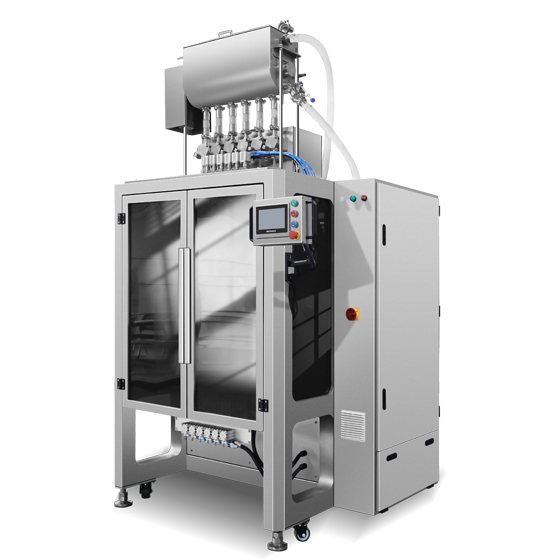
The following are features that one should consider when selecting a liquid packaging machine to enhance the efficiency and versatility of the packaging process.
This feature explains the speed of operation, where it is measured as the number of units produced by hour capacity. High-speed machines are ideal for large-scale production, while slower machines may be more suitable for smaller operations. Efficiency in terms of energy consumption and waste reduction is also crucial.
A good liquid packaging machine should be flexible enough to handle different varieties of liquids and various sizes of containers. Compatibility with existing available production lines and the ability to integrate with other equipment is another aspect to consider for operation.
Safety is a very critical consideration in operating. Liquid packaging machines must be installed with safety features, such as stop buttons, protective guarding, and sensors, to avoid occurrences like an accident that might injure the operators.
Understanding the costs involved in purchasing and operating a liquid packaging machine is essential to making an informed investment decision.
It covers the costs of the machine, installation, and perhaps the renovation of the production line. You need to consider these initial costs and ensure they fit within your budget.
These costs are incurred by maintenance costs, energy costs, and labor costs. In the long run, it is cost-effective to operate efficient machines, even if the purchase cost is high.
Performing a return on investment (ROI) analysis helps lessen the benefits of the investment by increasing production efficiency, minimizing labor costs, and providing more quality products.
Choosing the right liquid packaging machine involves several decisions to ensure it suits your needs for production and budget constraints.
Before investing in a liquid packaging machine, you need to assess your production needs in terms of volume, type of product, or packaging format. This is because knowing your needs can help you choose a machine that will handle your specific demands efficiently.
Liquid packaging machines are available across a wide range of prices, depending on their features and capabilities. It’s important to set the budget and then look for machines that deliver the best value for money, considering the upfront investment as well as long-term operational costs.
Choosing a reputable brand known for its quality and reliability, such as Coretamp, can prevent a potential problem in the future.
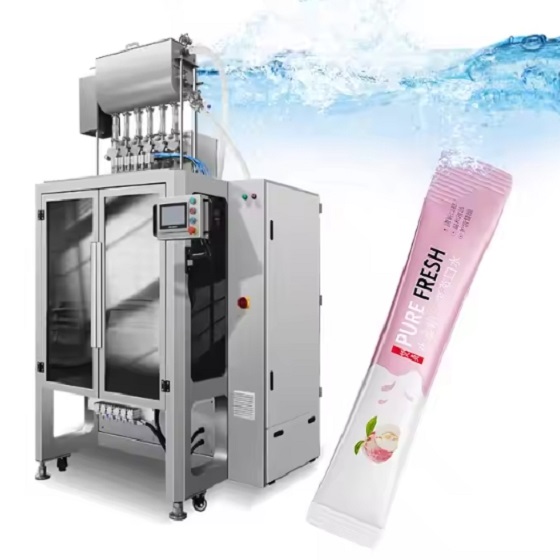
The proper installation and setting of liquid packaging machines can deliver better performance. Follow the right steps so that operation becomes easy and downtime is minimized.
Before installation of the machine, the site shall be prepared with enough room, ventilation, and utilities such as electricity and water. A work area that is clean and well-organized allows one to set up or maintain much more easily.
Follow the manufacturer’s instructions for setting up the machine the first time, in general, this entails anything from assembling a machine to get it ready for operation, and through to connecting utilities and calibrating. Ensure all parts are correctly fitted and the machine is level in order to avoid problems during operation.
After installation, the details of testing and calibration are to be done to ensure proper functioning. Proper filling volume, sealing, and movement of the conveyor must be checked. Address any issues identified during testing to prevent future problems.
Using the liquid packaging machine requires special skills to make production more efficient and safe.
Operators need to at least have a basic knowledge of mechanical and electrical systems and the capability to follow technical instructions. Attention to detail and problem-solving skills are also must-haves in identifying and solving issues that may arise.
The training in advanced programs is more detailed in machinery operation, maintenance, and troubleshooting. These programs often include hands-on training and certification to ensure operators can handle the machinery with as much competence as the machine level demands.
The certification proves that the operators are up to the required standard in the industry and possess the necessary skills to safely and effectively handle the operation of the liquid packaging machines. Many manufacturers offer certification programs for their machines, providing operators with the credentials needed to perform their duties effectively.
Regular maintenance of liquid packaging machines will help ensure they operate efficiently and increase their lifespan.
Clean the machine regularly to avoid the build-up of residues and impurities. Use proper cleaning agents while adhering to the manufacturer’s instructions not to damage sensitive parts.
Perform regular checkups to detect any form of regular deprecation or development of any problems. Always inspect key components, such as the filling head, conveyor, and seal for any damages and malfunction.
Be prepared to troubleshoot usual problems like fluctuating filling volumes, spillage, and machine jamming. If you are familiar with how the machine operates and some usual problems, you will take less time to repair the equipment.
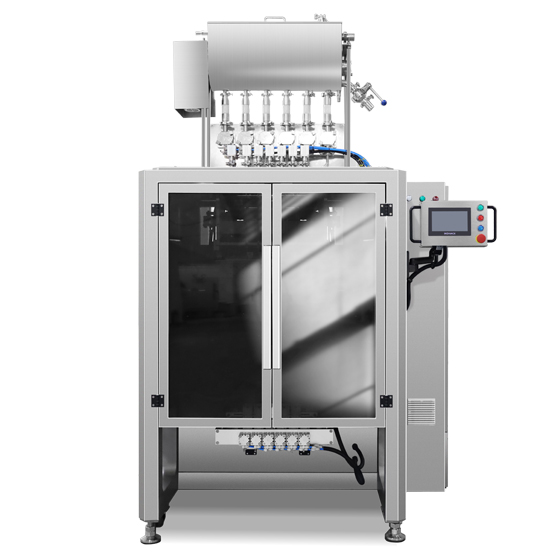
The manufacturers of liquid packaging machines regularly launch new innovations that improve productivity, sustainability, and modern development.
Smart packaging solutions are endowed with developed sensors and IoT technology that observe the situations and procedures surrounding packaging under observation and control in real-time. This will result in precision, less wastage, and data for optimization production.
In the wake of increasing global concerns about sustainability, various aspects have now been included in the design of liquid packaging machines. These include less energy consumption, usage of recyclable materials, and production of negligible waste, which help the business attain sustainability.
Increased automation and connectivity in the liquid packaging machines make it exhibit features of the 4.0 Industry. There are embedded features in this that increase the efficiency and reliability of the operation of packaging, including remote monitoring, predictive maintenance, and real-time data analytics.
Despite their advantages, liquid packaging machines can present certain challenges that need to be addressed to ensure smooth operation.
Varying liquid viscosities tend to challenge the machine’s performance for the right fill without spillage. This calls for the ability of the machine to adjust to different viscosity levels and to make adjustments to settings at the same time.
Spillage is common when working with liquids. Proper setting of the machines coupled with regular maintenance and the right filling techniques can bring about a response to minimizing spillage and ensuring a clean process of packaging.
Production efficiency can be significantly impacted by downtime. This can only be dealt with and minimized by constant maintenance, timely troubleshooting, and alternative backup plans to ensure operational continuity.
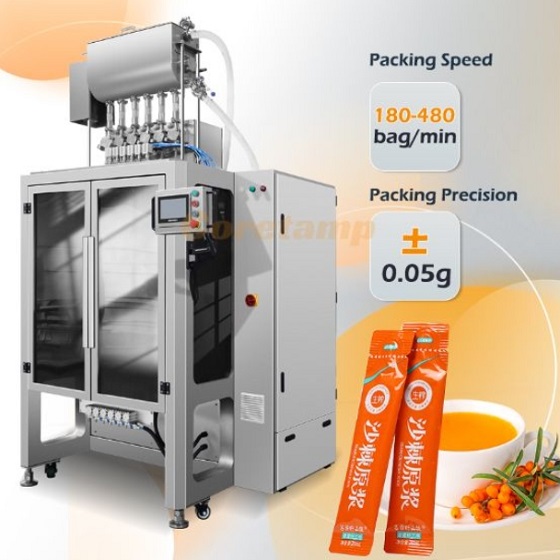
Liquid packaging is an industry that is constantly evolving and presenting newer trends and technologies.
Automation, robotics, and other forms of artificial intelligence bring revolutionary changes in the section for liquid packaging. Such technologies enhance precision, speed, and flexibility in aligning businesses with the dynamism of market demands.
Consumer inclination is shifting based on various perspectives of easy-to-use, sustainable solutions, and new diversified products, which makes liquid packaging change. This acts as a driver for the business in new material and packaging formats while being determined to compete in the market.
Consumers are more and more concerned about eco-friendly packaging solutions and products that go together with this. Liquid packing machines are, therefore, changing how packaging is done concerning these aspects, and offering environmentally safe and innovative solutions.
Customization options allow businesses to tailor liquid packaging machines to their specific needs and production requirements.
Custom nozzles can be designed to help content very many types of liquids and container sizes. These nozzles increase flexibility and precision during the filling process to ensure that accurate and efficient packaging is achieved.
This includes vacuum filling and gravity filling techniques that take into consideration varieties in liquid viscosities and packaging forms. Such ensures greater accuracy and quality of the filling process.
Automation can also make it possible for the incorporation of liquid packaging machines into the system with other systems, for instance, labeling and capping machines. This further increases the total productivity of a manufacturer. Integration among these different systems flows very smoothly in work and lessens possible causes of some error cases.
Liquid packaging machines are essential for efficient and reliable packaging in various industries. Knowledge of the types, characteristics, and advantages of these machines helps a business make an informed decision to optimize packaging operations. Regular maintenance, operator training, and staying abreast of industry trends and innovations ensure that liquid packaging machines continue to deliver high-quality results and meet changing market demands.
Relevant Recommendation